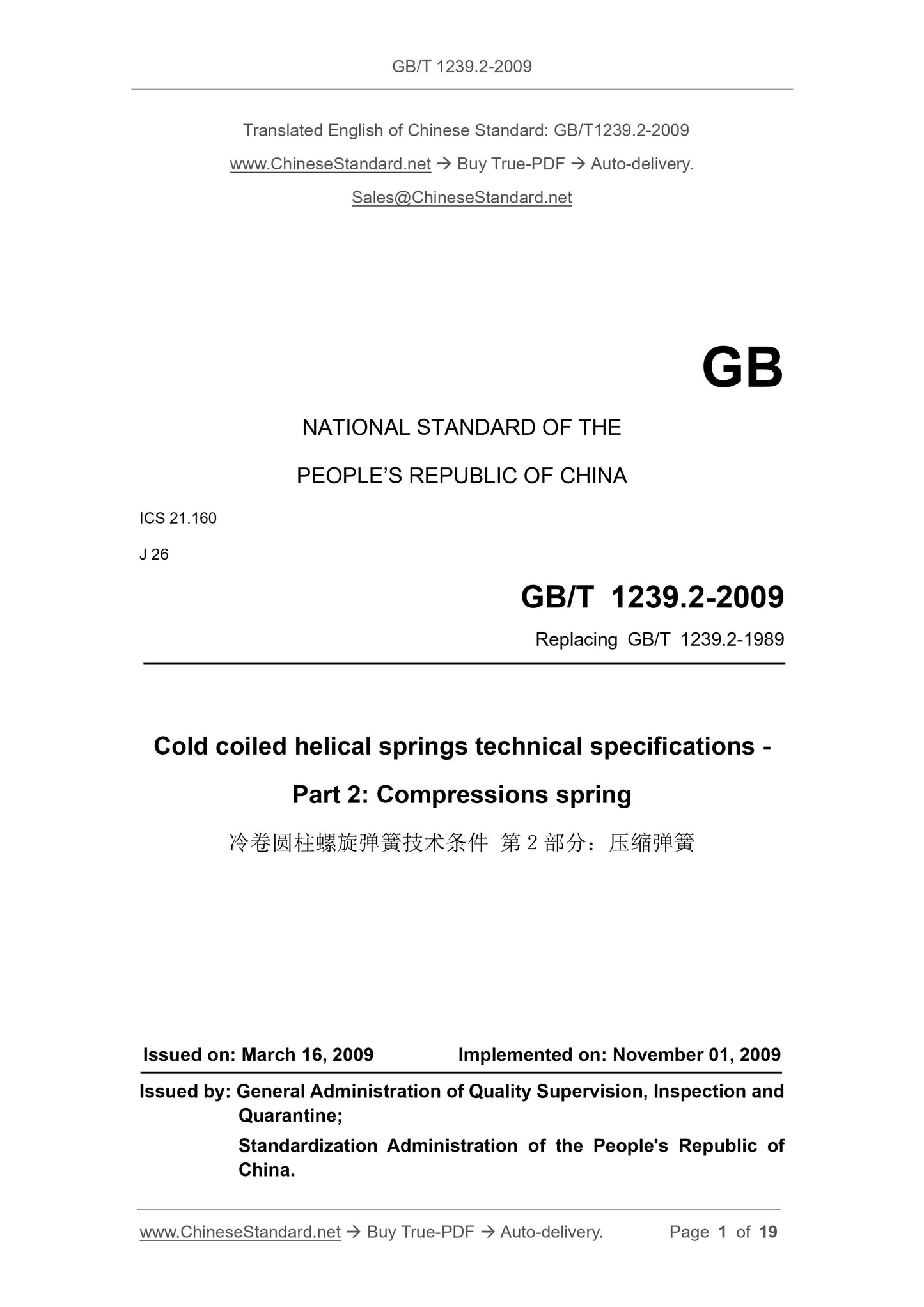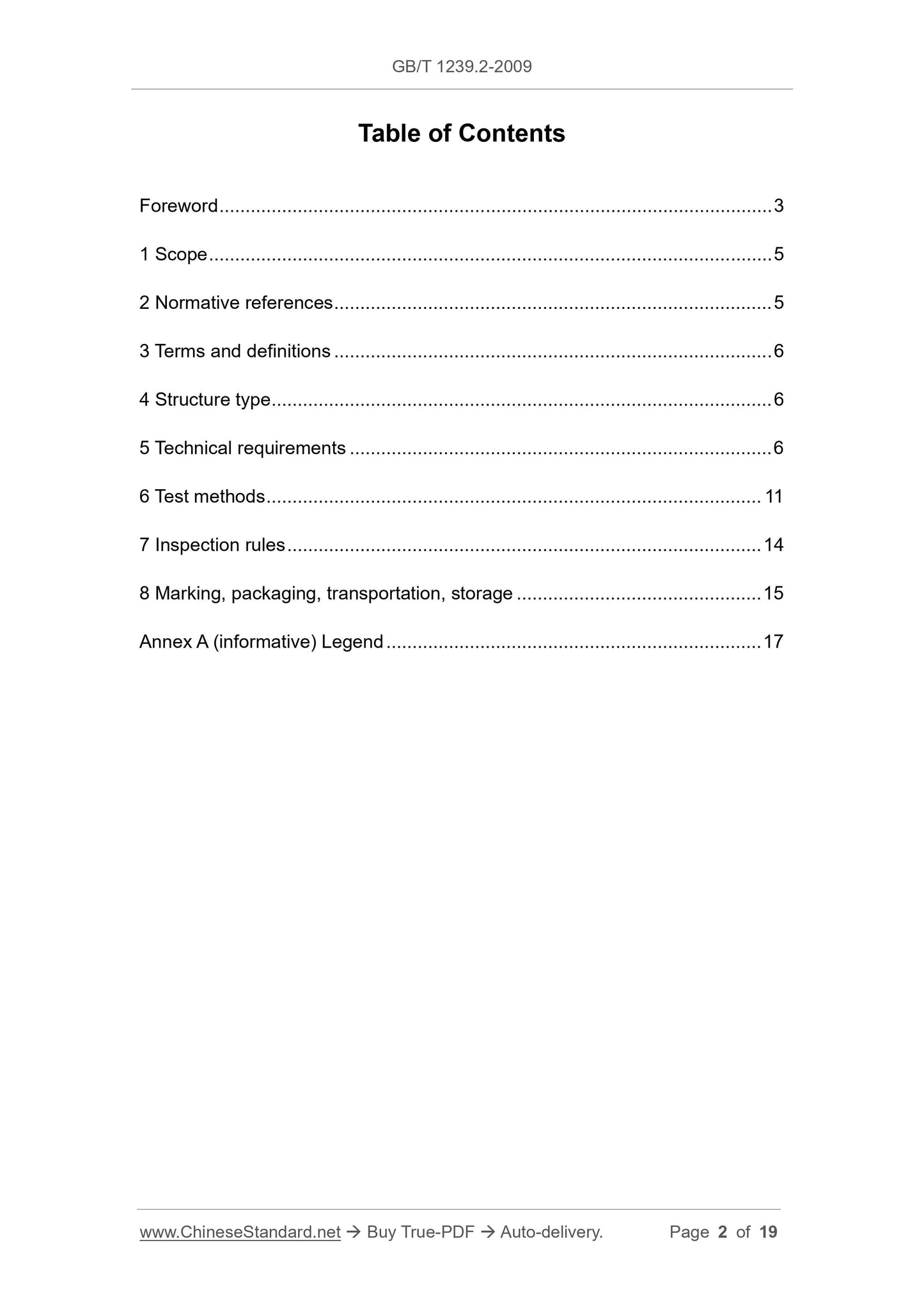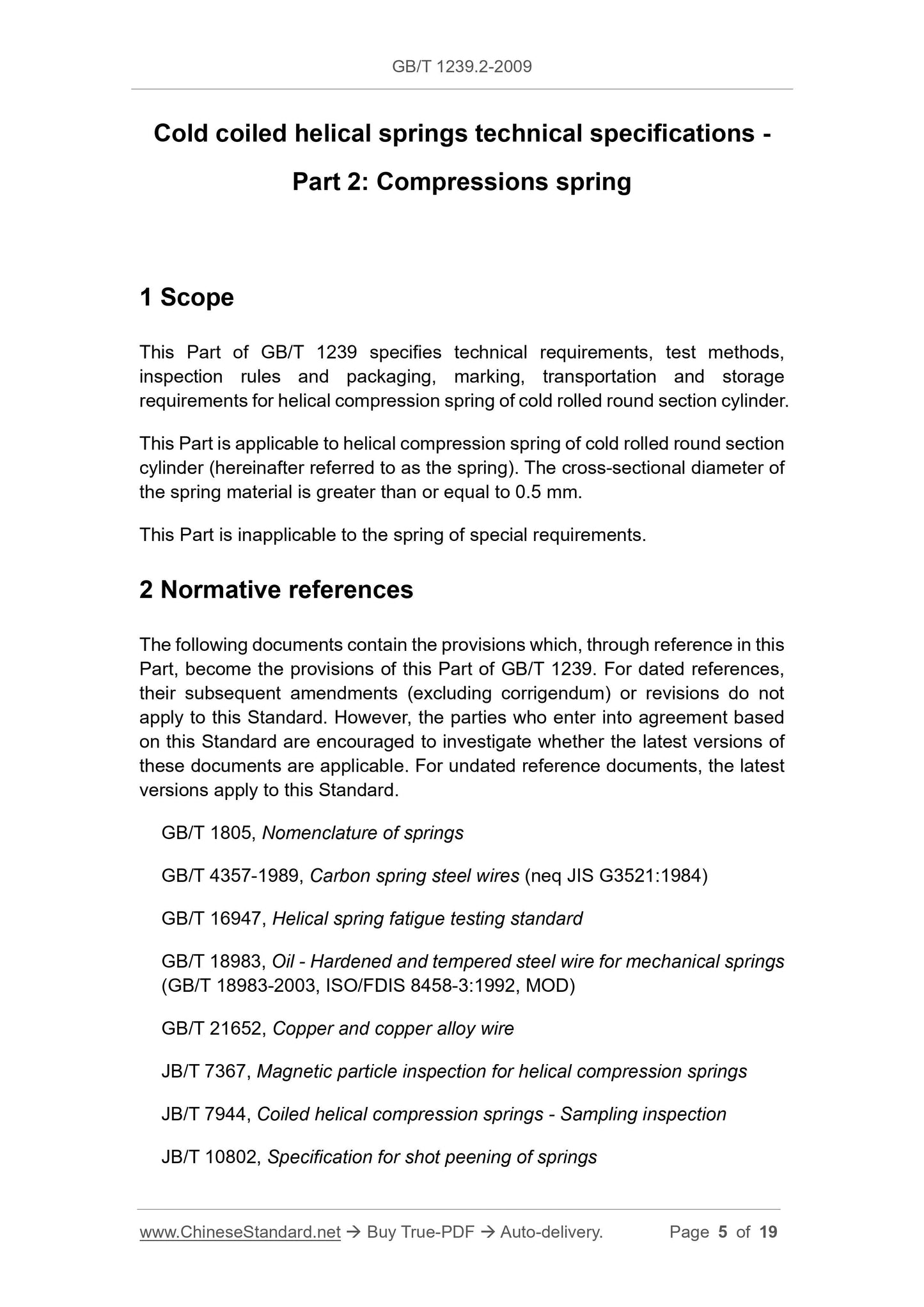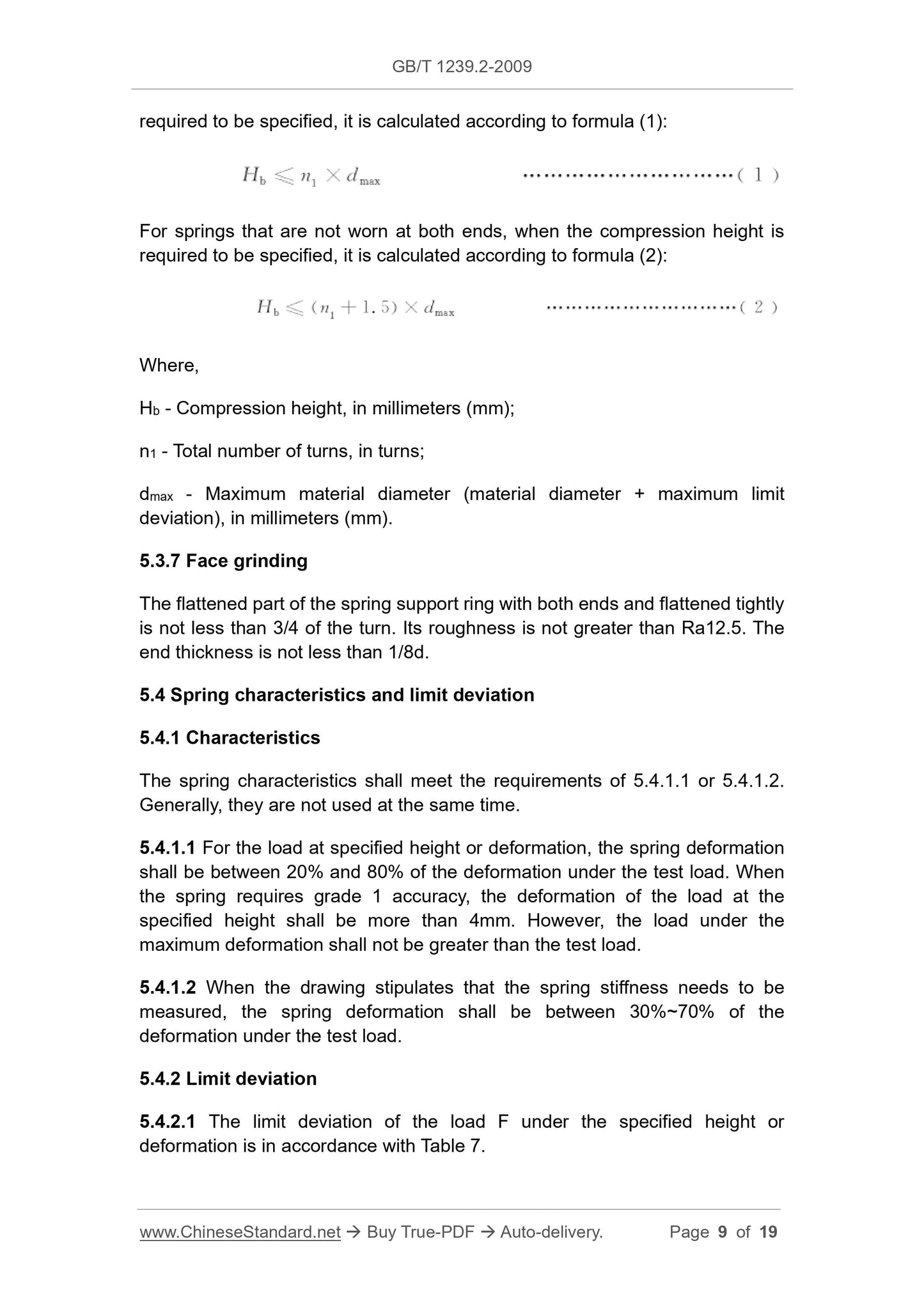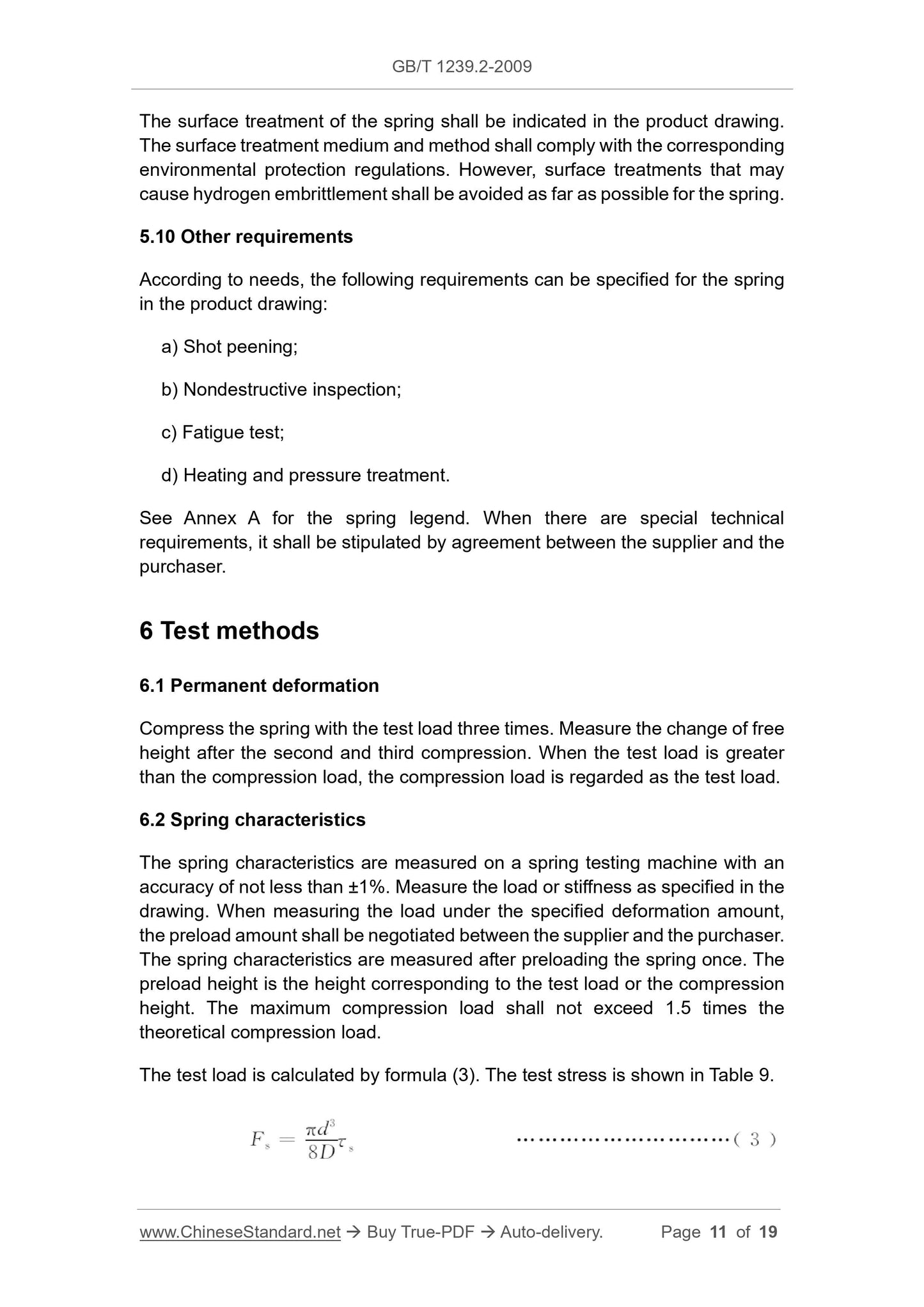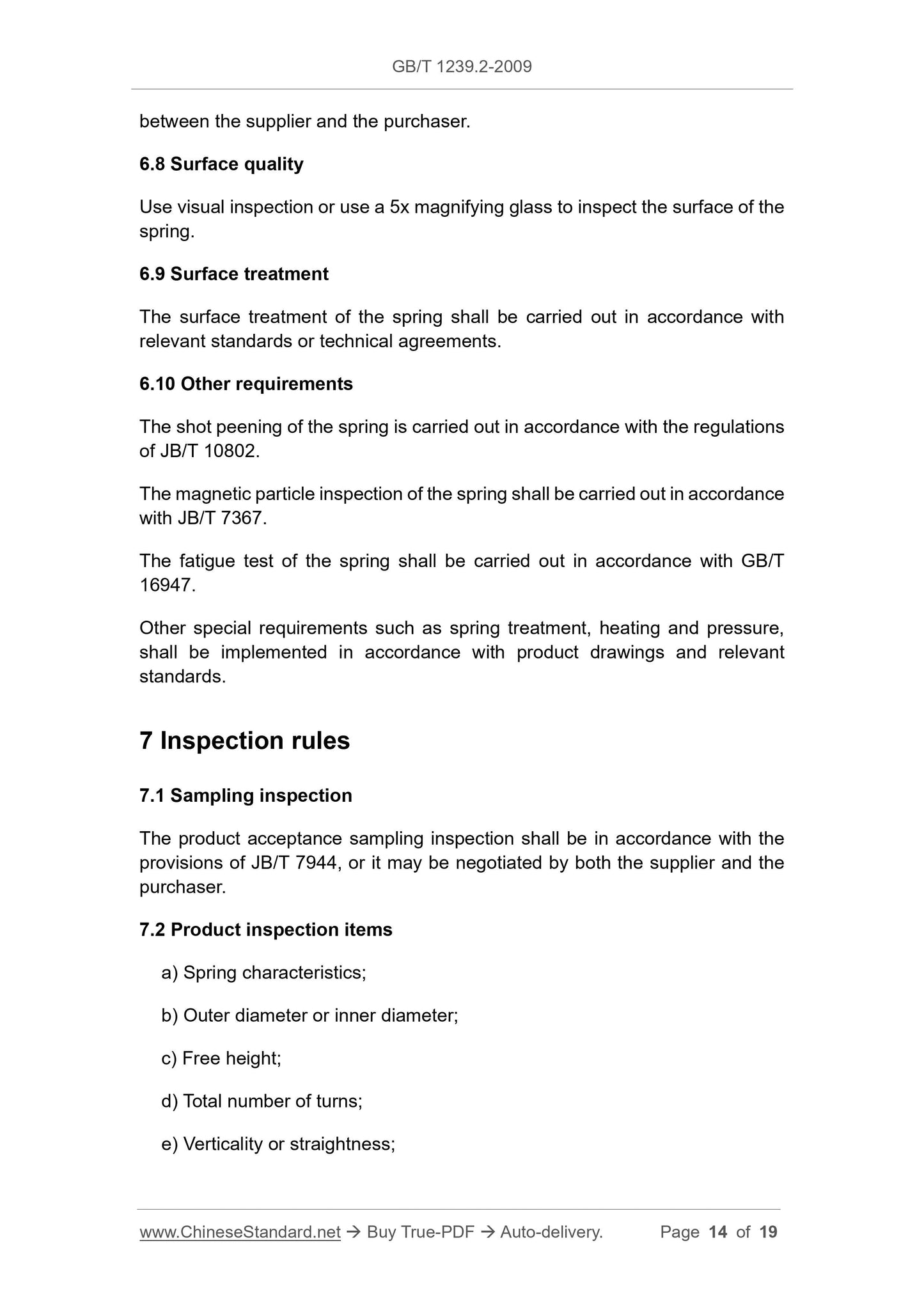1
/
of
6
www.ChineseStandard.us -- Field Test Asia Pte. Ltd.
GB/T 1239.2-2009 English PDF (GB/T1239.2-2009)
GB/T 1239.2-2009 English PDF (GB/T1239.2-2009)
Regular price
$105.00
Regular price
Sale price
$105.00
Unit price
/
per
Shipping calculated at checkout.
Couldn't load pickup availability
GB/T 1239.2-2009: Cold coiled helical springs technical specifications - Part 2: Compressions spring
Delivery: 9 seconds. Download (and Email) true-PDF + Invoice.Get Quotation: Click GB/T 1239.2-2009 (Self-service in 1-minute)
Newer / historical versions: GB/T 1239.2-2009
Preview True-PDF
Scope
This Part of GB/T 1239 specifies technical requirements, test methods,inspection rules and packaging, marking, transportation and storage
requirements for helical compression spring of cold rolled round section cylinder.
This Part is applicable to helical compression spring of cold rolled round section
cylinder (hereinafter referred to as the spring). The cross-sectional diameter of
the spring material is greater than or equal to 0.5 mm.
This Part is inapplicable to the spring of special requirements.
Basic Data
| Standard ID | GB/T 1239.2-2009 (GB/T1239.2-2009) |
| Description (Translated English) | Cold coiled helical springs technical specifications - Part 2: Compressions spring |
| Sector / Industry | National Standard (Recommended) |
| Classification of Chinese Standard | J26 |
| Classification of International Standard | 21.160 |
| Word Count Estimation | 13,150 |
| Date of Issue | 2009-03-16 |
| Date of Implementation | 2009-11-01 |
| Older Standard (superseded by this standard) | GB/T 1239.2-1989 |
| Quoted Standard | GB/T 1805; GB/T 4357-1989; GB/T 16947; GB/T 18983; GB/T 21652; JB/T 7367; JB/T 7944; JB/T 10802; YB/T 11; YB/T 5311; YS/T 571 |
| Regulation (derived from) | National Standard Approval Announcement 2009 No.2 (Total No.142) |
| Issuing agency(ies) | General Administration of Quality Supervision, Inspection and Quarantine of the People's Republic of China, Standardization Administration of the People's Republic of China |
| Summary | This standard specifies the cold rolling section of helical compression springs technical requirements, test methods, inspection rules and packaging, signs, transport, storage requirements. This section applies to cold rolling cross-section helical compression spring (hereinafter referred to as the spring), cross-sectional diameter of the spring material is greater than or equal to 0. 5 mm. This section does not apply to the special requirements of the spring. |
Share
